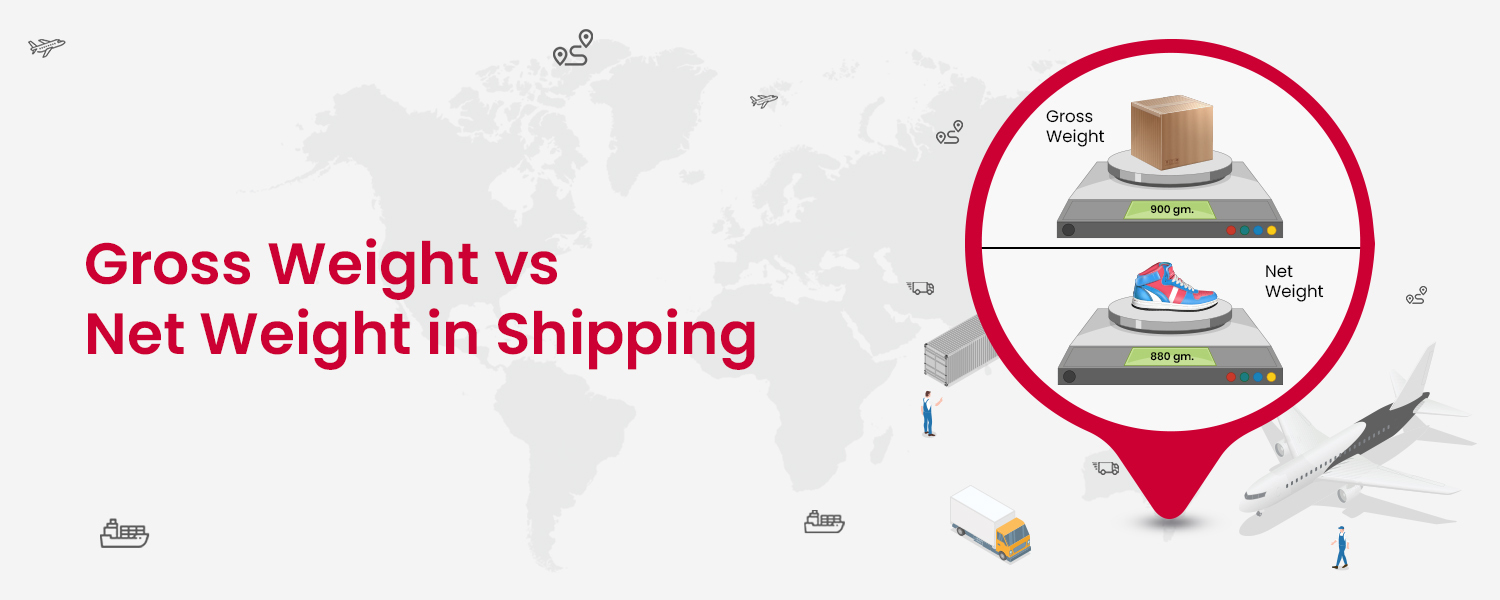The choice between declaring gross weight or net weight in the bill of lading can influence the safety, legality, and economics of your cargo’s transportation across the globe. They both are the silent arbiters in the high-stakes game of international shipping, where a misstep could mean the difference between seamless efficiency and a logistical nightmare.
When it comes to a Container Bill of Lading, the consensus among shipping experts and industry practice is to declare the Gross Weight. Gross weight encompasses the total weight of the shipment, including the weight of the goods (Net Weight) as well as the weight of the container, packaging, and any additional shipping materials.
This declaration is essential for several reasons:
- Accurate Shipping Costs: Shipping rates are often based on the gross weight. Accurate declaration ensures correct invoicing and avoids under or overcharging.
- Legal Compliance and Safety: Shipping companies must adhere to strict weight regulations for safety and legal reasons. Overloading, as indicated by an incorrect Gross Weight, can lead to safety risks and legal penalties.
- Operational Efficiency: Correct Gross Weight declarations enable transport carriers to manage load capacities effectively, maintaining operational safety and efficiency.
- Customer Satisfaction: Customers expect to pay for the net product weight, not the packaging, especially in cases where commodities are sold by weight. Declaring Gross Weight allows for a breakdown of these components, enhancing transparency.
Net Weight vs Gross Weight in Detail
To truly understand the intricacies of shipping, one must delve into the nuanced differences between Net Weight and Gross Weight, and recognise the scenarios where they intertwine and diverge.
Net Weight
Net Weight is closer to the essence of the product – it is the weight of the goods themselves, devoid of any packaging or additional materials. Consider it the pure, unadulterated weight of what you’re actually interested in shipping.
Gross Weight
Gross Weight is all-inclusive. It encompasses the Net Weight of the product plus the weight of everything that comes with it – the packaging, the pallets, the containers, and any other material used in the shipping process.
What is the Process of Calculating Gross Weights?
- Start by weighing all the packaging materials, including boxes, pallets, wrappers, or any protective materials.
- Once your product is packed as it would be for shipping, weigh the packed product along with its packaging.
- Add the weight of the packaging materials to the Net Weight of your product. The total is the Gross Weight.
For example, let’s say the boxes and pallets used to pack the apples weigh 50 kilograms. Add this to the Net Weight of the apples (200 kilograms), and you get a Gross Weight of 250 kilograms. Gross weight is also called Verified Gross Mass (VGM) on the bill of lading as it is the total weight of an ocean shipment’s cargo, dunnage, bracing, and the container’s tare weight.
Conclusion
As we anchor at the end of this blog, let the insights gleaned from Gross vs Net Weight in shipping empower your decisions and actions, ensuring that with every Bill of Lading, you are moving the business forward responsibly and reliably.
NimbusPost is your comprehensive eCommerce logistics platform that makes complex processes like international shipping hassle-free. As you’re well aware, the success of cross-border shipping depends on certain factors like shipping cost, the right carrier, inventory management, easy clearance, and transit time. NimbusPost offers solutions to all these problems within a simple, easy-to-use dashboard. By using our integrated platform, you get:
- A shipping rate calculator to calculate your international shipping cost.
- A dedicated courier recommendation engine to choose the best international courier services.
- Hassle-free custom clearance and port-to-port freight forwarding.
- Advanced warehouse and fulfillment centers across the globe with modern inventory management technology.
- A unified end-to-end tracking feature gives you a bird’s eye view of your freight transportation




